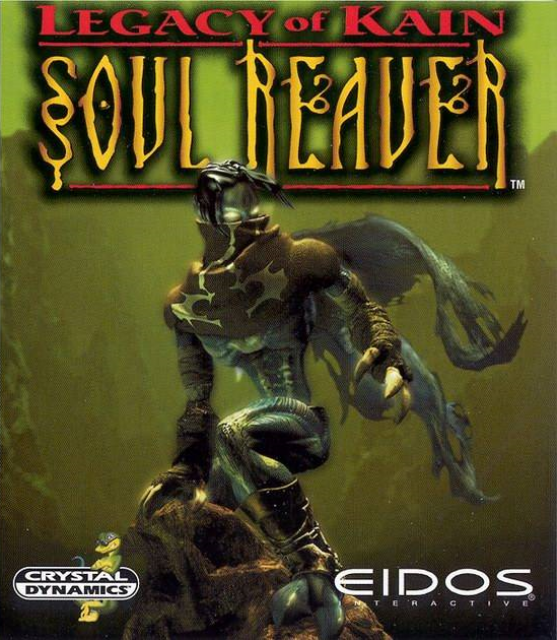A dated game that just doesn't work by modern standards
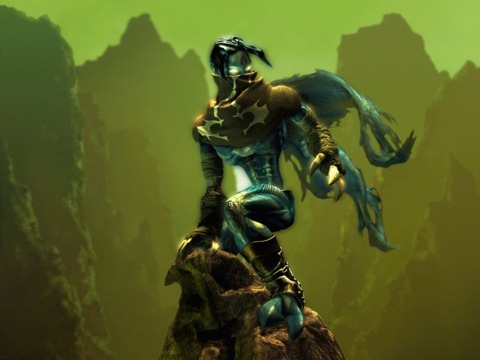
NOTE: I would like to note that I did not play this game when it was originally released. As such, I decided to review this game as it stands today, for someone who doesn’t have any nostalgia for it. I ask fans of the original to remove their rose-tinted glasses and think about the game from my point-of-view.
Legacy of Kain: Soul Reaver places you into the role of Raziel, a former vampire who is forsaken by his master Kain at the beginning of the game. He is cast into the Lake of the Dead and left to torment for all eternity. Raziel is saved, however, by a mysterious wraith and given a chance for vengeance. The former-vampire is now a new being, a soul sucking demon with changed powers. Raziel returns to a world that has decayed in the hundreds of years since his demise and fights through his several brothers in order to reach Kain and claim his vengeance.
The writing of Soul Reaver is easily its strongest aspect. Both Raziel and Kain are excellently voiced and speak in poetical, almost-Shakespearean dialogue that is always enjoyable to listen to. When the two of them are together, the writing flows and the two bounce off each other superbly. Sadly, this doesn’t happen often enough, only twice in the entire game. None of the other characters are as fun to listen to and instead just spout inane, evil dialogue before being killed by Raziel.
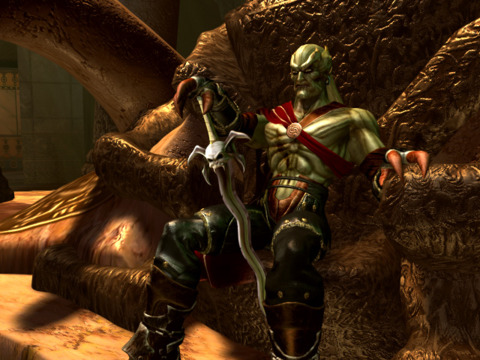
The rest of the game suffers from poor storytelling done mostly through boring, stale voiceover. Occasionally, you’ll get a voiceover from either your wraith friend or Raziel explaining a piece of the world. There is rarely any context to this information, instead feeling dumped in your lap. You are learning about the world, surely, but in a manner that makes it hard to actually retain any of the information being given. Worst of all is that the end of the game, just when the story starts to come together in a more cohesive way, is capped off with a massive cliffhanger, one of the worst I’ve ever seen in a game.
Finding your way forward is also a challenge, as you are never clearly told where to go. You will get a general idea from the wraith who is helping you, but it is given in the context of the world. How am I supposed to know what the Fortress is if there are no signs indications informing me thusly? It necessitates wandering around aimlessly until you find the one path available to you with your current ability set. When I did find myself in one of the main areas, I became even more lost. Oftentimes, the way to progress was so hidden or abstract that I couldn’t find a way out for several minutes. It’s poor level design at its worst, practically necessitating the usage of a guide to make it through--unless you like being frustrated for hours.
Gameplay in Soul Reaver has you navigating a large world through a variety of platforming, puzzles, and combat. You can go pretty much anywhere, your progress only being barred by various abilities you need to pass certain obstacles, Metroidvania-style. Scattered around the world are various gates that allow you to teleport freely between them once discovered. It’s also important to note that this is how you resume a saved game, as loading your progress always puts you back at the very beginning of the game, with your solved puzzles and defeated bosses remaining intact. You can quickly move forward to the game’s first gate and warp back to where you were upon resuming. It’s a strange choice, but it works rather well--as long as you make sure to find a gate before quitting the game.
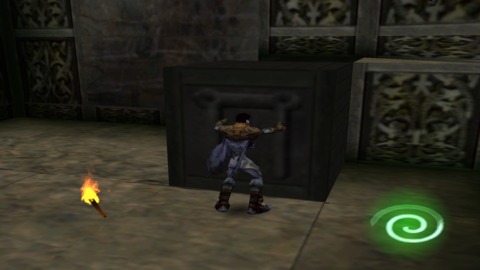
There is quite a lot of platforming throughout Soul Reaver. As you may expect from Playstation 1 era gameplay, this platforming is extremely touchy and unbearably frustrating at times. Several of these sections are ridiculous, requiring a set of uncannily precise jumps in order to proceed. The game’s keyboard controls (gamepad support isn’t available natively for the X360 controller) are imprecise and never seemed to do what I wanted during these segments, overstepping just enough to plummet me back to the bottom of a particularly hard section. To make matters even worse, the camera is absolutely atrocious. It gets stuck on corners regularly and has a tendency of auto-adjusting at just the wrong moment to mess up one of your jumps. By the end of the game, I absolutely HATED the game’s platforming and never wanted to do it again.
Puzzles are also a common occurrence in Soul Reaver, particularly block puzzles. I hope you enjoy pushing blocks around for several minutes at a time, because many of this game’s block puzzles get quite intense and complicated. There is a veritable cornucopia of these puzzles in the game, sometimes in quick succession. At the very least, the controls for pushing the blocks are excellently implemented, allowing you to move the blocks in any direction once grabbed (somewhat of a rarity in the genre, actually) and the ability to flip blocks over to fit them into place. These puzzles were diverse and well-designed, but I grew tired of the sheer number of them eventually.
The other type of puzzle is figuring out how to progress through certain obstacles. You obtain new powers from the infrequent boss encounters, as you absorb the soul of one of Raziel’s brothers. These give you abilities such as being able to pass through gates or swim through previously-deadly water. The boss fights themselves are quite creative in what you are asked to do to succeed, more like puzzles than actual fights. I especially liked one that has me kite the boss back through the level to a furnace before torching him to death instead of actively fighting him in combat. However, these fights are all extremely easy, once figured out, and somewhat anticlimactic. The final boss fight (a repeat of a fight you’ve already done, in fact) is an absolute joke and feels very lazy in design.
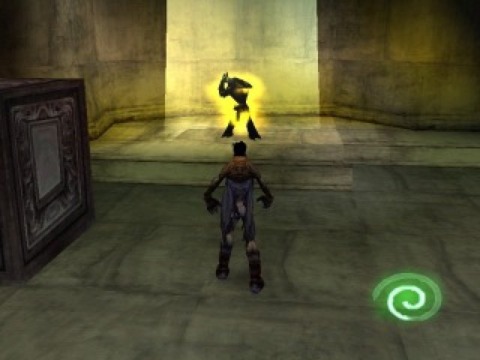
The final part of gameplay in Soul Reaver is combat. Raziel is always equipped with his claws, able to do short combos to assault his foes. Most of these enemies, however, won’t die normally. You have to use the grapple button to pick them up and throw them into water, fire, or spikes to finish them off. It’s also possible to obtain weapons that can execute spearing finishes and eventually your Soul Reaver blade. On some base level, I enjoyed the simplicity of the combat, as long as there wasn’t more than a single enemy. Combat never becomes difficult--mashing the attack button works for every enemy in the game. Enemies serve more as annoyances, getting in the way of your puzzle-solving or traversal.
In an interesting mechanic, Raziel can switch between the physical and the spiritual worlds, often to solve puzzles and progress forward. This mechanic is dictated by Raziel’s spirit energy (or health, essentially), which he builds by eating the souls of his fallen foes Raziel’s abilities are different in both worlds: for example, he can’t move blocks in as a spirit and he can’t phase through gates physically. I also thought it was neat how the developers handle death with this mechanic, as dying in the physical world simply sends you back to the spiritual world. Gathering a bit of energy and finding a portal lets you shift right back to try again, with only a small amount of lost time. It makes death a lot less frustrating.
I came to Legacy of Kain: Soul Reaver because of the overwhelming nostalgia that fans of the series seem to have. For years, I have heard that this series has one of the best stories in gaming and knew that I would have to check it out eventually. When I finally did, I just didn’t feel this reverence in my time with the game. Maybe the story picks up in the sequel, but I didn’t really care much about the events of Soul Reaver--aside from the fascinating relationship between Kain and Raziel. Considering the quality of the gameplay (by modern standards), I feel like I wasted my time by playing through this game. I suffered confusing level design, unbearable platforming, and far too many block puzzles to count in order to finally know what this game was--and it wasn’t worth it.
